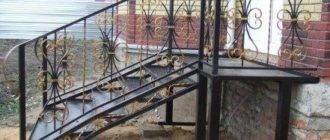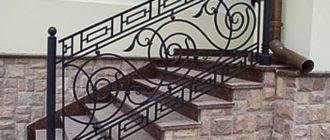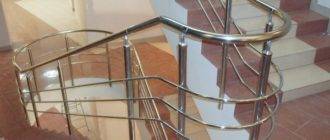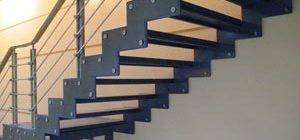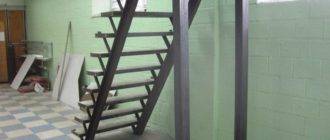What can primarily be characterized by cast-iron stairs and fences? Basically, it is, of course, artistic value.
Moreover, such an impractical property of the design is taken out precisely in the first place in relation to a cast-iron product.
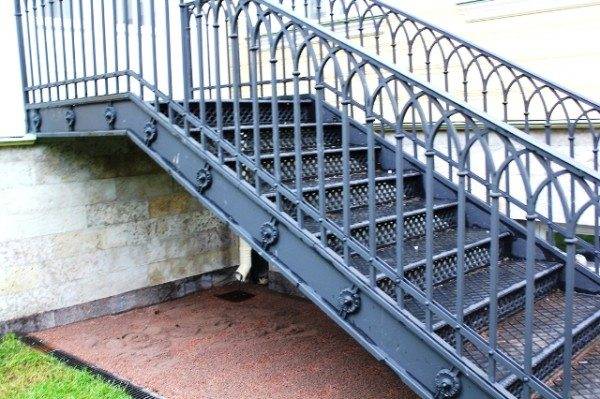
Cast iron beauty
On the other hand, it is always both strength and longevity. It is generally difficult to argue with the second point, given that in practice there are structures that were cast centuries ago!
Today, a cast iron staircase or a fence made of this metal is truly capable of completely transforming any interior of the house. This moment is especially interesting, because not every structure can easily "fit" into the interior.
In addition, it should be noted that cast iron is perfect for structures that will be located in the open air.
Here you can make the first requirements for the product:
- Durability and resistance to weathering.
- Resistant to abrasion, wear, scratches and other damage.
- Resists rotting and corrosion.
- Frost resistance.
Manufacturing
The process of making a staircase from cast iron can take from two weeks to several months. It all depends on the scale of work and design issues, architectural solutions.
We can say that the first stage, and this is the definition of design and drawing up a project, remains the most difficult.
It can be conditionally displayed as follows:
- The type of future product is determined.
- All necessary measurements are made.
- The dimensions of the parts are calculated.
- The style and artistic image of the construction is determined.
- Creation of a complete technical project with detailed technical documentation.
- Design project with all the smallest details.
- Determination of the casting method.
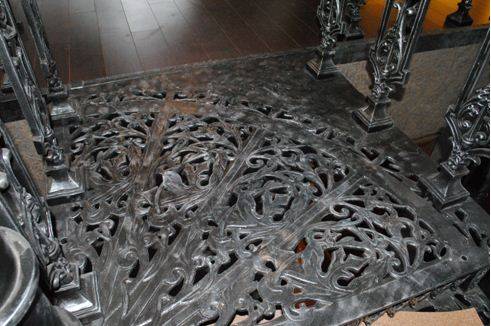
After all this, the finished drawings are sent to them all the documentation to the model shop, where models of the product are made according to the sketches. This can be done using plaster, clay, or plastic.
And at the last stage, both the documentation and the models go directly to the foundry.
Casting types
All cast iron stair railings and staircases themselves can be cast in the three most common ways:
- Lost wax ebb.
- Earthen mold casting.
- Casting in cold-hardening mixtures.
When choosing a method of casting in cold-hardening mixtures or in an earthen mold, plastic models of the product are first made.
On a special milling machine, using 3D technology from plastic, the necessary elements are created:
- March area.
- Pillar.
- Baluster.
- Small items.
If an earthen mold is used, the models obtained on the machine are filled with a sand-clay mixture and subjected to pressing. When the plastic sample is removed, a stable form remains in the ground, into which molten metal is poured.
Important!
This method is most widely used when casting staircases, steps, and balusters.
That is, we are talking about simple elements from a design point of view.
Casting into cold-hardening mixtures differs from the earthen mold only in the quality of the composition that is used in the work. It uses molding sand, which is not mixed with simple clay, but with cold hardening resins.
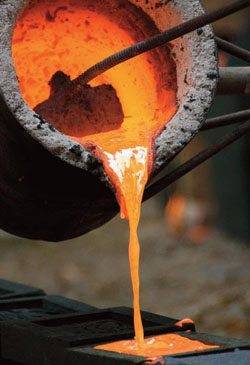
This method allows you to create shapes that completely repeat even small design elements, small patterns and inscriptions.
Lost wax ebb is based on the physical properties of the wax, or rather, on its ability to melt when exposed to high temperatures.
The operating instructions are presented here in the following steps:
- A plaster copy of the product is created.Moreover, the copy is perfect, without the slightest irregularities or defects. Any defect will affect the future cast iron product.
- The copy is made 5% larger than the future original. This is due to the fact that the wax is prone to shrinkage at the time of hardening. In addition, a stock is given at the time of processing already metal.
- The copy is covered with a layer of polymer rubber, which hardens quickly enough in the open air. After that, the rubber shell is cut with your own hands, and the form is removed.
- Molten wax is poured into the rubber mold, and as soon as it hardens, the wax model is covered with a special refractory powder, which includes a silicate binder.
- Further, the model is subjected to heat treatment, in which the wax melts again and leaves the formed mold.
- The resulting shell is fired in a furnace to give it additional strength, after which molten metal is poured into it.
It is this type of casting that is used to make the most complex parts of a cast structure, which can be saturated with drawings and inscriptions.
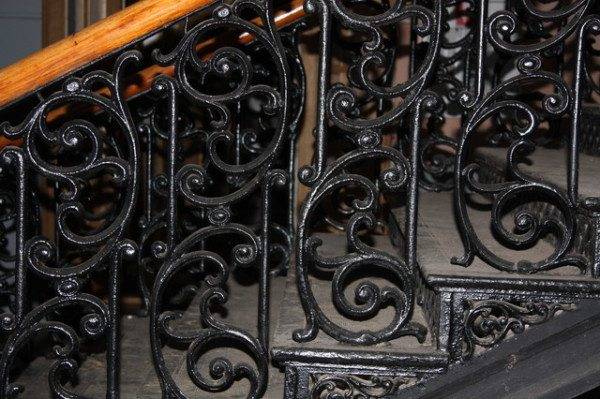
The casting method is determined by the technologist, proceeding from the complexity of the stylistic filling of the product. In any case, the presence of three different methods allows casting either in one of them, or in combination, depending on the need.
Screw version
Separately, it is necessary to say a few words about this type of product as cast-iron spiral staircases, because they are invariably an interesting part of any design that has cast-iron structures.
It can be noted right away that a spiral staircase is always more compact and takes up a much smaller area than a marching structure. This is a definite plus, which allows you to economically treat the usable area of the premises. (see also Single-flight ladder: a simple solution)
However, the spiral staircase still first of all strikes with its shape and design features, and not by the very fact of its ergonomic location. She, undoubtedly, can be the real decoration of any room.
Casting technology allows you to make a spiral version of the staircase as a whole. All components are cast individually and then mechanically assembled on site. This allows you to create almost any project, create perfect stairs, and follow the recommendations for the technological assembly of stairs.
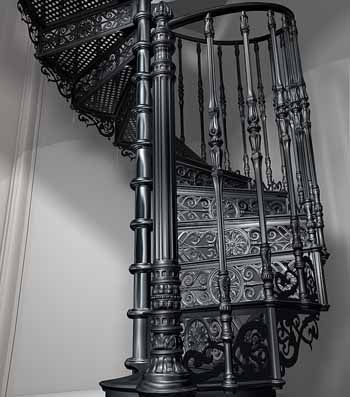
A feature of this type of staircase is always the moment of fastening the steps. Here, the fastening assumes that the steps will be fastened in the form of a regular fan to the central supporting column of the structure. All steps are connected to each other using special bolts. This is the mechanical assembly method.
It should be emphasized that with this option, the main load will fall on the support pillar, which is located in the center of the structure, and it provides all the steps with absolute immobility.
A spiral cast-iron staircase can demonstrate a rise in any direction of the clockwise, it depends on the customer's desire, and does not affect the design moments in any way. By and large, this moment should still be determined by the typological features of the building. In general, in practice, the vast majority of stairs are designed with a clockwise rise.
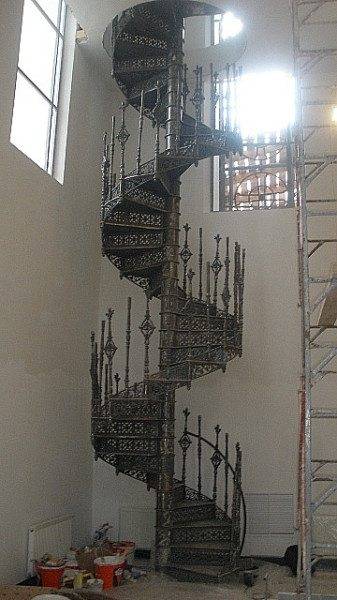
Spiral
There is another type of staircase, this is a spiral march. The spiral staircase differs from the screw version by a different fixing and a much larger inner radius.
There is no central support pillar, and the main load goes to the spiral support beams-bowstrings, which are located on the sides of the steps.
In addition, it should be said that the artistic image of the spiral staircase is completely different from the marching and spiral version. This is a somewhat intricate structure, in which the frame is also the supporting structure.
Bolts and intermediate suspensions, which are attached to the ceiling, are used as fastening elements for such a structure. True, these are rather complex types of fasteners, and they are used in non-standard types of premises.
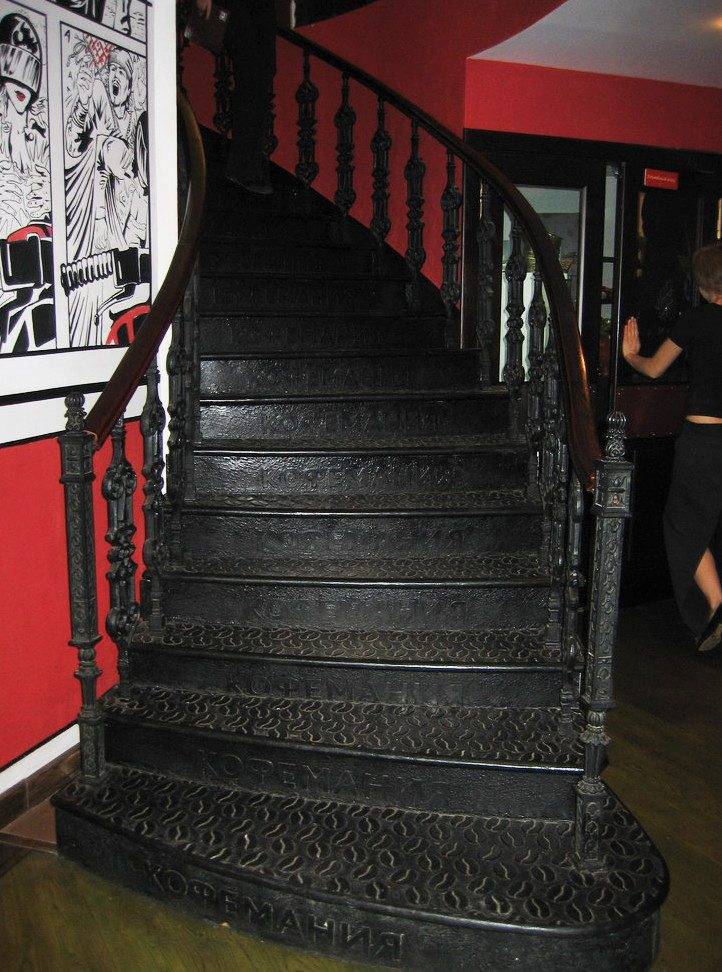
Interestingly, it is quite easy to combine several types of fastening, and most importantly, to use several types of stairs in one structure.
The most common reason for connecting a marching type of staircase with a spiral or spiral is due to an insufficient amount of space and a desire to win precious square meters. On the other hand, this combination creates a completely original design. (see also Two-flight staircase, construction and materials used)
Output
The manufacture of cast-iron stairs and fences is not only a technologically complex process, but also expensive. The price of such a structure can start from 200,000 rubles, and go up to several million, depending on the scale and complexity.
In addition, the cost is influenced not only by the cost of manufacturing the structure and the cost of the material, but also by the cost of assembly. You cannot just purchase a cast-iron staircase, this is only half the battle, because the installation process itself is quite specific and complex.

However, prices are always adequate, because cast-iron stairs and fences, by definition, cannot be inexpensive, for all the complexity of the work and the artistic elegance of the product itself. In the video presented in this article, you will find additional information on this topic.

